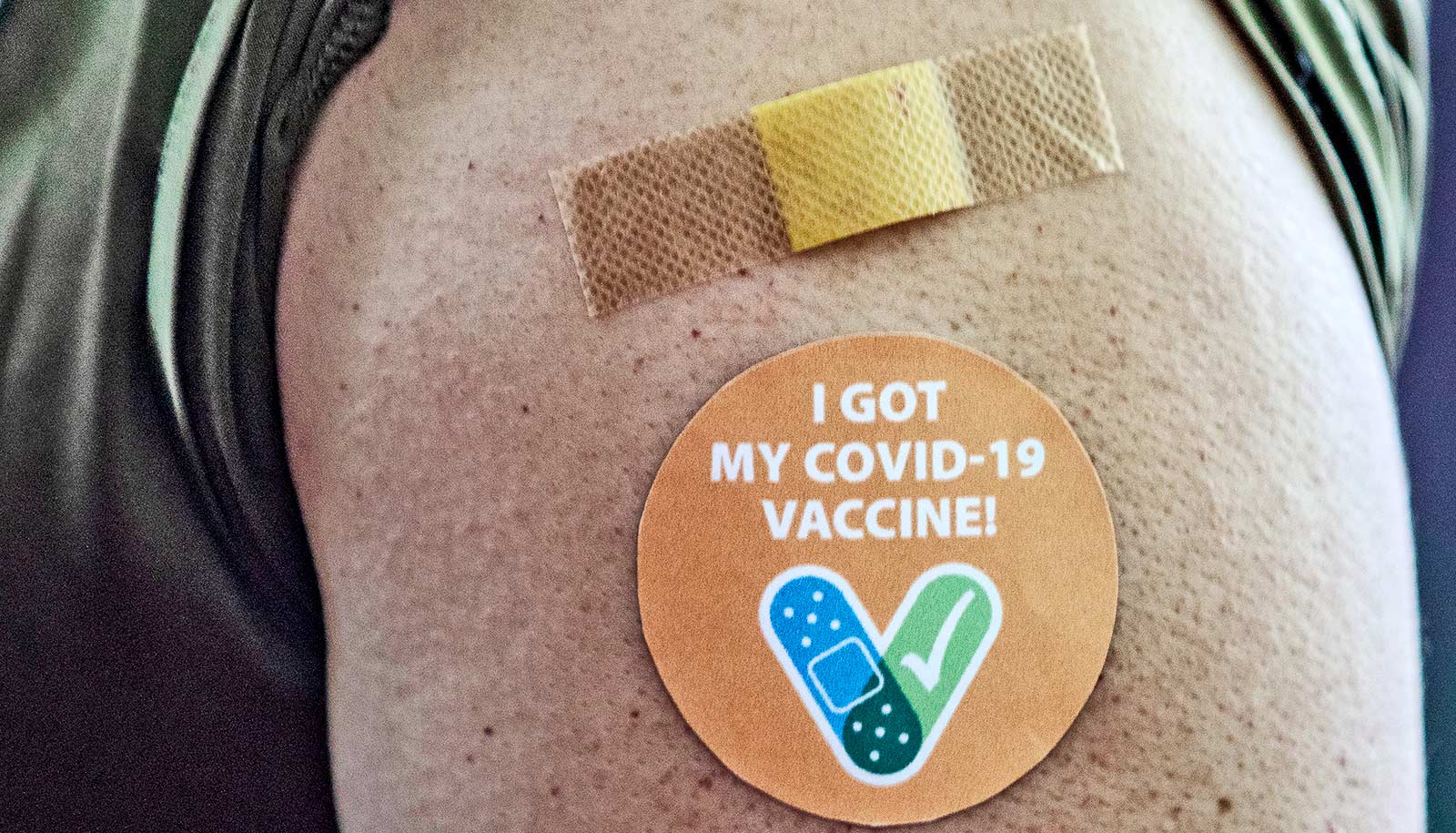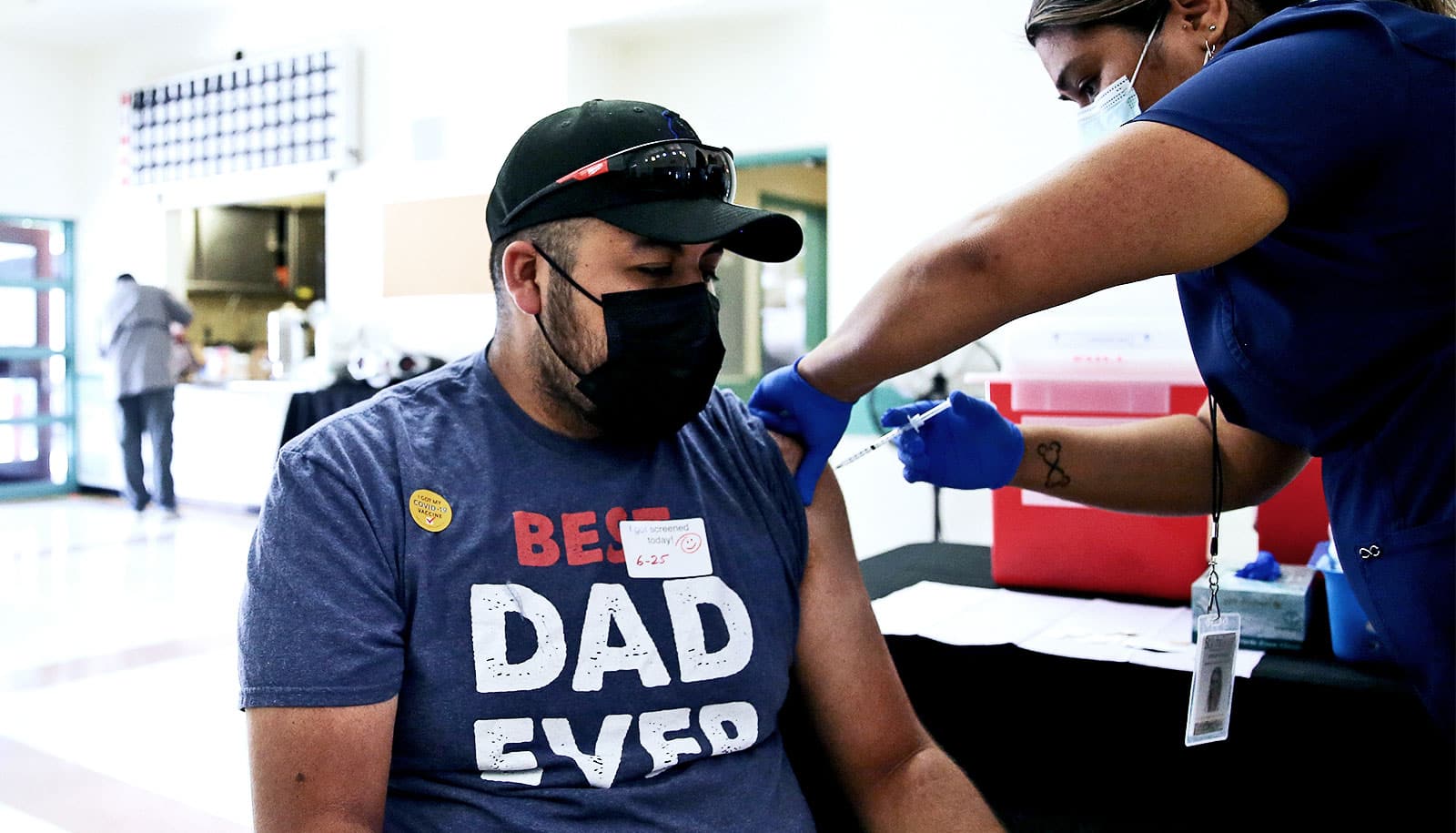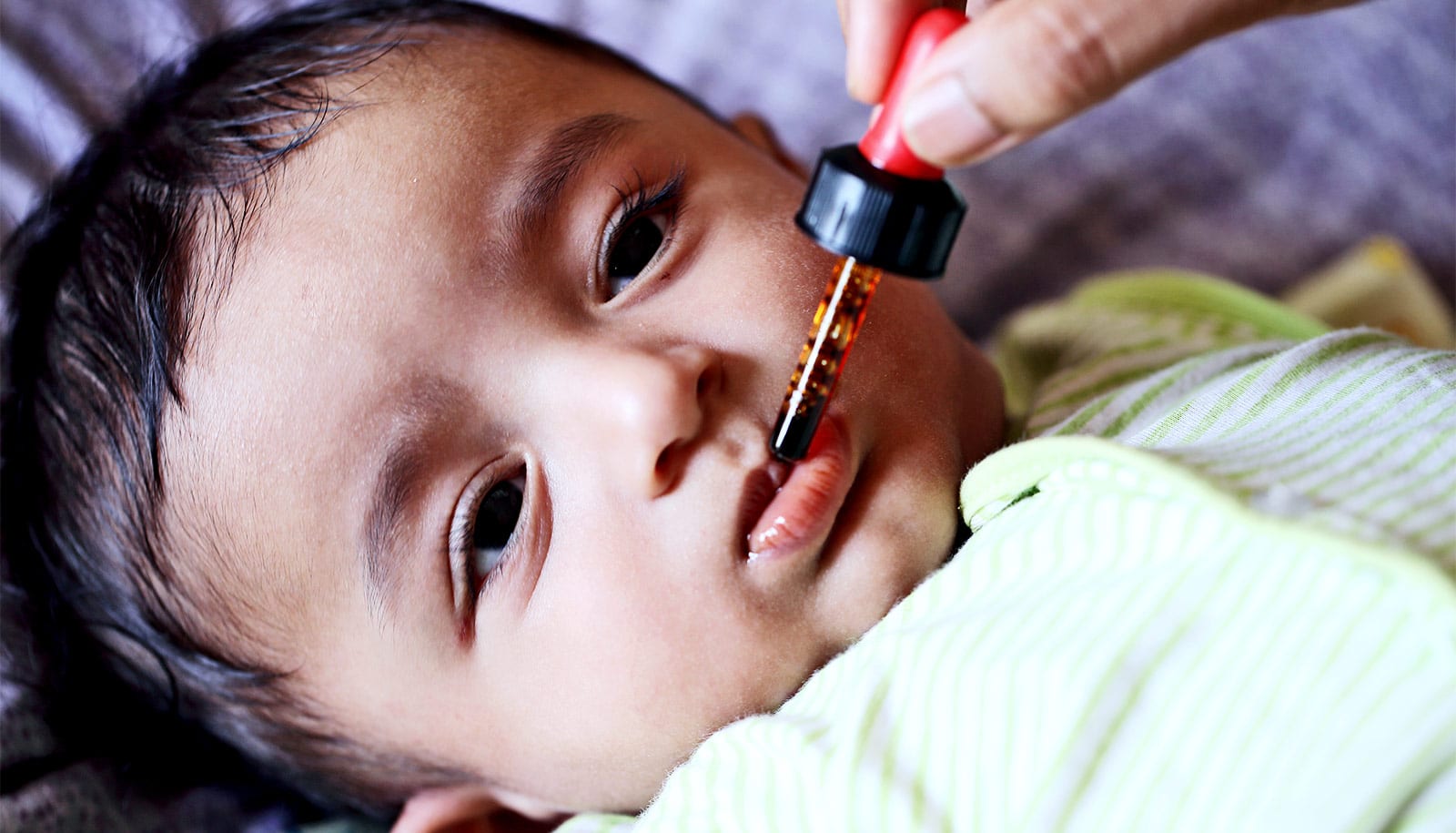A gene signature seen in antibody-producing cells in the blood of vaccinated study participants could expedite vaccine development, a new study shows.
Scientists developing the COVID-19 vaccines accelerated clinical trials, but a major holdup was waiting to see whether the vaccine protected the study participants. What if there was a way to predict a person’s vaccine-induced immunity?
By studying the immune responses of 820 adults to 13 vaccines, researchers found that the strongest predictor of immunity for many vaccines was a gene signature recognizable in blood cells that produce antibodies—plasmablasts—seven days post-vaccination.
With the finding of such a universal predictor of immunity from vaccination, scientists are hoping to accelerate vaccine development by measuring the gene signature of plasmablasts in a person in the days following vaccination, rather than waiting weeks to see if that person’s immune system will respond appropriately.
“Our integrated analysis has revealed a common gene signature that predicts the strength of the antibody response to most vaccines,” says Bali Pulendran, a professor of microbiology and immunology at Stanford University and senior author of the study in Nature Immunology.
“This paves the way for the development of a ‘vaccine chip’ that can be used as an early screening strategy of future vaccine candidates, accelerating the timeline for research and development efforts.”
Immunity to vaccination atlas
Pulendran has been mulling the idea of a universal immunity predictor since he wrote a 2008 paper examining the yellow fever vaccine, a vaccine with 97% efficacy, which is seen as a gold standard in understanding how a successful vaccine works.
He and his colleagues studied cells, genes, and proteins to see how they responded to the yellow fever vaccine. Using machine learning, the researchers found biomarkers, molecular signs that the vaccines were working, in the first week after vaccination that could predict immune antibody response at 30, 60, and 90 days.
The paper jumpstarted the field of systems vaccinology, a global look at the molecular landscape of vaccine response. Following the 2008 paper, researchers explored other vaccines, such as the flu, malaria, and meningococcal and pneumococcal vaccines, producing a 2021 study also led by Pulendran detailing the Pfizer-BioNTech mRNA COVID-19 vaccine. They identified the molecular machinery each vaccine initiated, but the research left open the question of whether there was a universal predictor.
To find the common marker in the current study, researchers created an “atlas of immunity to vaccination,” a compilation of the previously published genomic readouts of the molecular material, including plasmablast genes, produced once someone’s immune system is activated by a particular vaccine. It’s the most comprehensive dataset of vaccine responses gathered, Pulendran says.
“This molecular atlas of immunity to vaccination serves as a kind of immune fingerprint registry to cross-reference for any future vaccines that scientists will develop to anticipate the immunity of patients who receive the vaccine.”
When people are vaccinated, their immune response follows a classic roll-out: The foreign object (antigen) activates the white blood cells that make antibodies and attack invaders (B cells) as well as cells that destroy a body’s traitors (T cells), which then can transform into memory cells, before fading away once the immune system disarms the invader.
Finding a commonality among study participants’ vaccines is possible because our immune system responses tend to vary, if only slightly, from one vaccine to another. Our innate immune reaction is ancient and straightforward: Barriers, such as skin, that prevent foreign objects from entering our bodies are common all the way from “sea slugs to stockbrokers,” Pulendran says.
But it takes about seven days for our adaptive immune response—the one we’re more familiar with, which includes the antibodies and memories of pathogens gone bad—to kick in.
In their study, the scientists found that key elements of the participants’ vaccine-induced immune cascade were similar in all vaccines except for one: yellow fever. The yellow fever immune response followed the same pathway as other vaccine responses but had a delay in the time that plasmablasts were deployed.
Pulendran says that is likely because it is a live vaccine that builds a slow progression of immune response, the way a symphony progresses by adding an instrument at a time following the conductor’s baton raise.
Once the scientists adjusted for time, the algorithm revealed the predictor of a person’s response to virtually any vaccine: the plasmablast signature, specifically M156.1, a module or specific set of genes expressed in plasmablasts.
‘Vaccine chip’ in the future?
In their study, Pulendran and colleagues proposed a “vaccine chip” that would use a PCR test—what lab technicians use to find COVID-19 virus genetic material—to measure a set of genes that predict the outcome of a vaccine response by studying which genes are activated and therefore which immune products are present in the body. The study suggests that if your plasmablast M156.1 gene readout reaches a threshold level, you’re more likely to be protected from the targeted pathogen.
Scientists could incorporate the chip into clinical trials to speed up their evaluation of candidate vaccines. Clinicians may also be able to use the chip to predict an immunocompromised person’s response to a vaccine to see if they need a booster sooner than most.
Although the study found a threshold of immunity, at the peak of the antibody response, among participants, it doesn’t suggest how long the immunity will last. Pulendran and his colleagues are now focusing on finding a universal predictor of durability to understand how long we can go until we need booster shots of new vaccines.
“We’re at an exciting new time in this field of systems vaccinology, with the prospect of customizing vaccines to the recipient based on these molecular signatures,” Pulendran says.
“The COVID-19 pandemic has underscored the global imperative to be ready to fast track the deployment of multiple vaccine candidates when the next pandemic emerges. Here’s a big step in the right direction.”
Additional researchers are from the Icahn School of Medicine at Mount Sinai, Emory University School of Medicine, the National Institutes of Health, Cambridge University, UC San Francisco, Fred Hutchinson Cancer Research Center, Boston Children’s Hospital, Harvard Medical School, NG Health Solutions, Broad Institute of MIT and Harvard, University of Lausanne, and the Swiss Institute of Bioinformatics.
The National Institutes of Health; the Department of Pediatrics at Boston Children’s Hospital; the Bill and Melinda Gates Foundation; Open Philanthropy; and the Violetta L. Horton, and Soffer and Open Philanthropy Endowments funded the work.
Source: Stanford University



